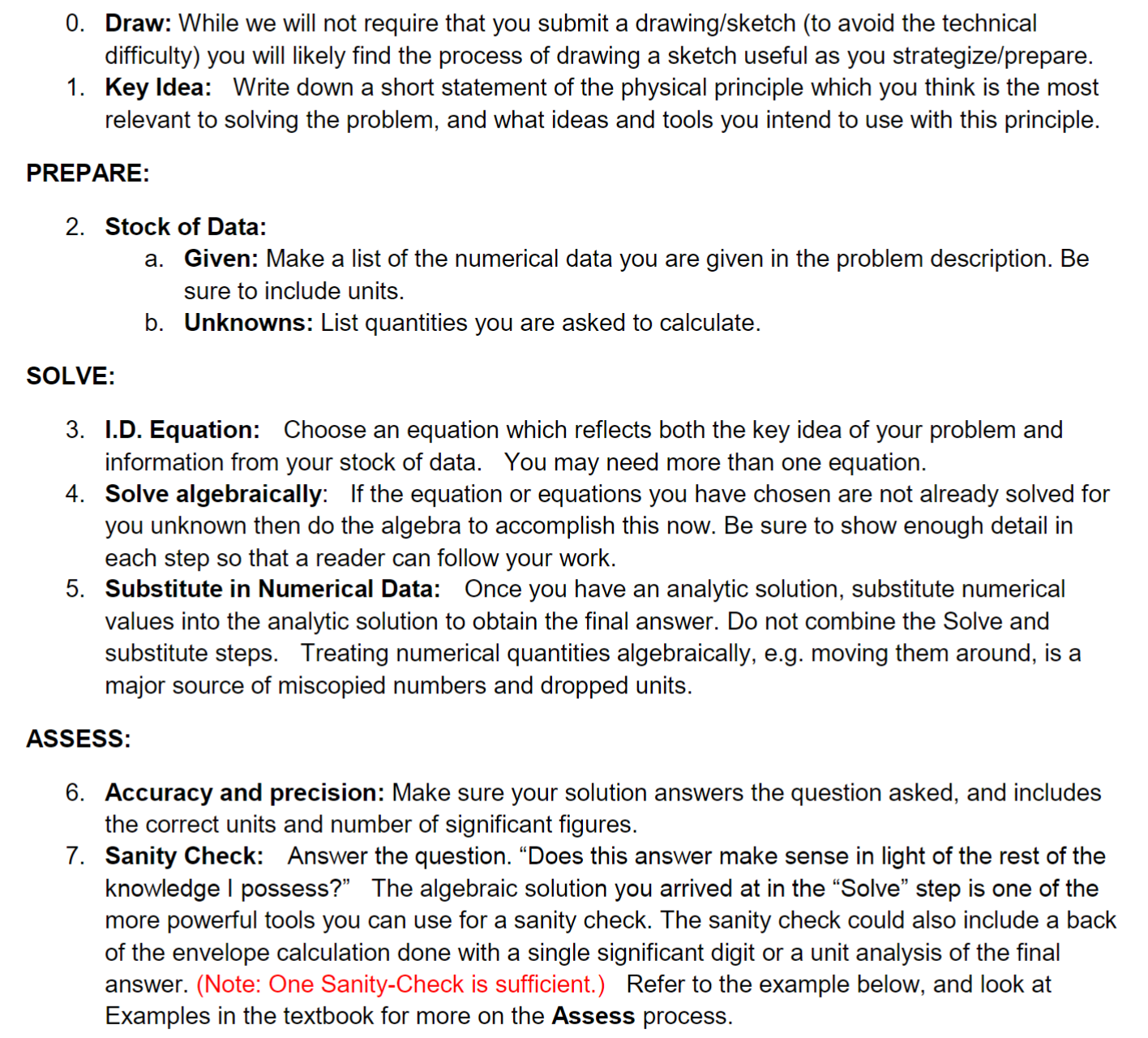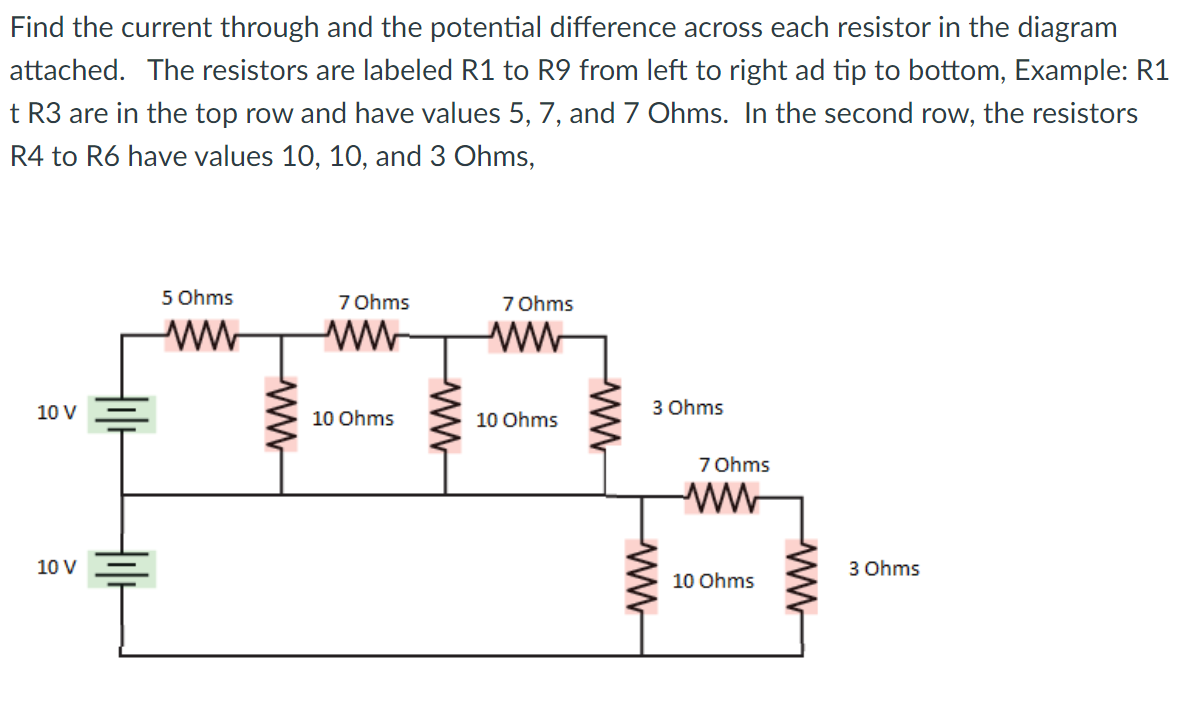Answered step by step
Verified Expert Solution
Question
1 Approved Answer
0. Draw: While we will not require that you submit a drawing/sketch (to avoid the technical difficulty) you will likely find the process of


0. Draw: While we will not require that you submit a drawing/sketch (to avoid the technical difficulty) you will likely find the process of drawing a sketch useful as you strategize/prepare. 1. Key Idea: Write down a short statement of the physical principle which you think is the most relevant to solving the problem, and what ideas and tools you intend to use with this principle. PREPARE: 2. Stock of Data: SOLVE: a. Given: Make a list of the numerical data you are given in the problem description. Be sure to include units. b. Unknowns: List quantities you are asked to calculate. 3. I.D. Equation: Choose an equation which reflects both the key idea of your problem and information from your stock of data. You may need more than one equation. 4. Solve algebraically: If the equation or equations you have chosen are not already solved for you unknown then do the algebra to accomplish this now. Be sure to show enough detail in each step so that a reader can follow your work. 5. Substitute in Numerical Data: Once you have an analytic solution, substitute numerical values into the analytic solution to obtain the final answer. Do not combine the Solve and substitute steps. Treating numerical quantities algebraically, e.g. moving them around, is a major source of miscopied numbers and dropped units. ASSESS: 6. Accuracy and precision: Make sure your solution answers the question asked, and includes the correct units and number of significant figures. 7. Sanity Check: Answer the question. "Does this answer make sense in light of the rest of the knowledge I possess?" The algebraic solution you arrived at in the "Solve" step is one of the more powerful tools you can use for a sanity check. The sanity check could also include a back of the envelope calculation done with a single significant digit or a unit analysis of the final answer. (Note: One Sanity-Check is sufficient.) Refer to the example below, and look at Examples in the textbook for more on the Assess process. Find the current through and the potential difference across each resistor in the diagram attached. The resistors are labeled R1 to R9 from left to right ad tip to bottom, Example: R1 t R3 are in the top row and have values 5, 7, and 7 Ohms. In the second row, the resistors R4 to R6 have values 10, 10, and 3 Ohms, 10 V 10 V Hili 5 Ohms 7 Ohms 7 Ohms ww www ww 3 Ohms 10 Ohms 10 Ohms ww 7 Ohms ww 10 Ohms www 3 Ohms
Step by Step Solution
There are 3 Steps involved in it
Step: 1

Get Instant Access to Expert-Tailored Solutions
See step-by-step solutions with expert insights and AI powered tools for academic success
Step: 2

Step: 3

Ace Your Homework with AI
Get the answers you need in no time with our AI-driven, step-by-step assistance
Get Started


